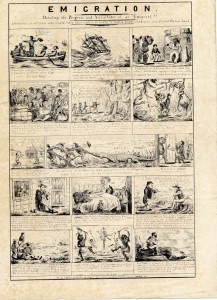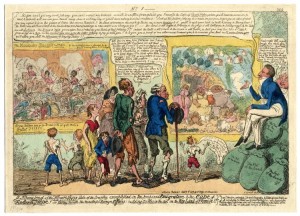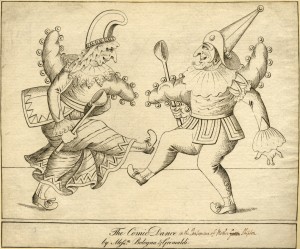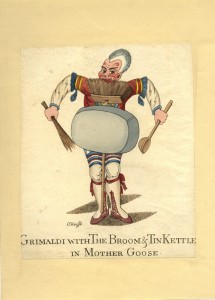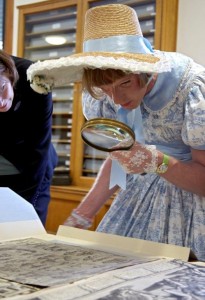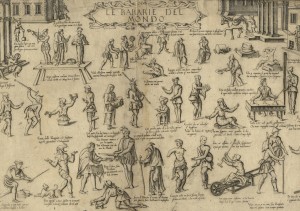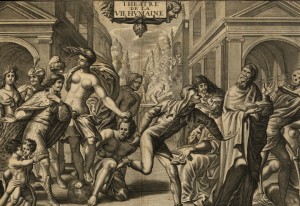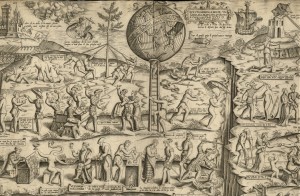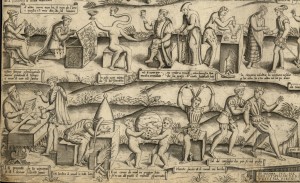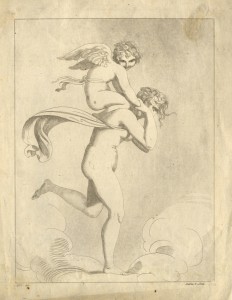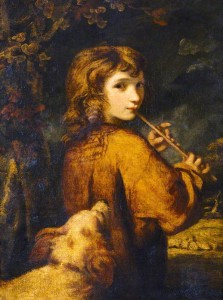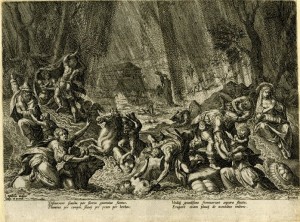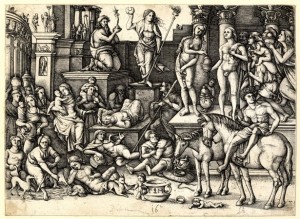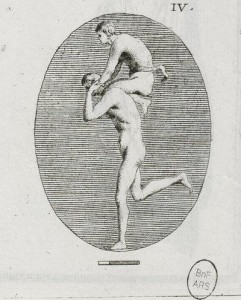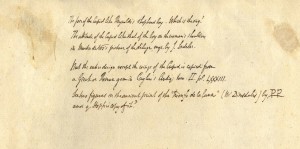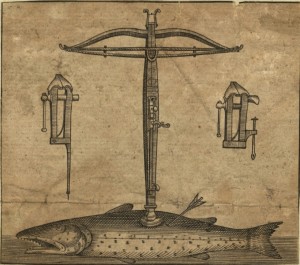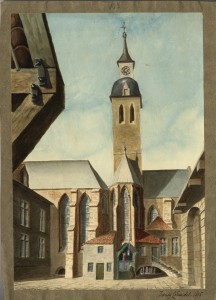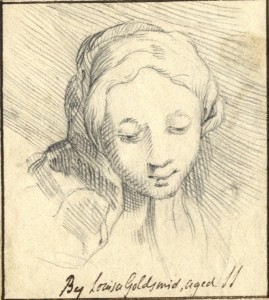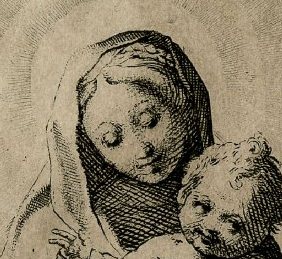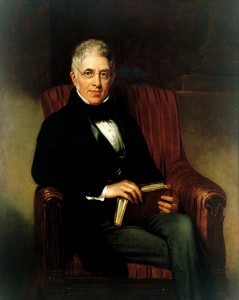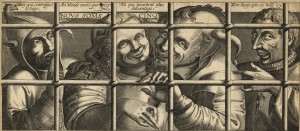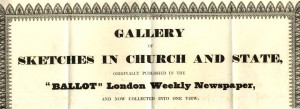The drawing below was made by Jean Auguste Dominique Ingres, an artist renown, among many other things, for getting his props right:

Jean Auguste Dominique Ingres, Deux Chaises de style Louis XIII, 1803-16, graphite © Montauban, musée Ingres, © Service des musées de France, 2010
Like other history painters working in the early decades of the nineteenth century, Ingres would have appreciated Douce’s well-stored repository of images of chairs, bedsteads, tables, bath-tubs, lamps, stoves, etc. Some might have been given to Douce by friends:

Anonymous, Two chairs, c. 1800-34, graphite and watercolour (Ashmolean Museum, Oxford)
The chair on the left could have been made in the late seventeenth century, since it is very similar to this side chair from Nymans, West Sussex:
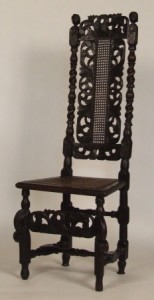
English chair, 1690, walnut and cane (Nymans Estate, West Sussex) © National Trust Collections
It is also the type of chair chosen by George Clint (1770-1854) to furnish the room where Mistress Ford waits for Falstaff in this scene from The Merry Wives of Windsor:

George Clint, Falstaff’s Assignation with Mrs Ford, c. 1830-31, oil paint on canvas (Tate Gallery, London)
The two chairs could have been drawn in the course of Douce’s friends’ tours and excursions around Britain: a few drawings of gates and lanterns kept with his prints were, for instance, a gift from the topographical and antiquarian draughtsman William Alexander (1767-1816). Another example is the bed below, which according to Douce’s annotation on the verso, was copied “from a small brass plate on the floor of Hurst church, Berks by J. Hare Esq. 1827”:

J. Hare, Deathbed, 1827, graphite (Ashmolean Museum, Oxford)
Other furniture drawings in Douce’s collection could have been preparatory designs for prints published as part of pattern books, as is probably the case of these eighteenth-century chairs:

Anonymous, Three chairs, c. 1750, pen and ink, with grey wash (Ashmolean Museum, Oxford)

